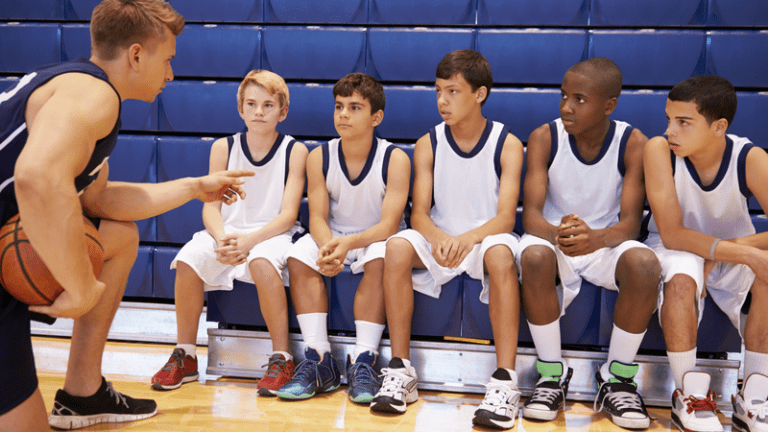Understanding Basketball’s Defenses + Systems
The old adage of defense wins championships may seem less and less true with out-of-this-world talents like Russell Westbrook and Stephen Curry lighting it up at times, but believe us, it’s still true. Take a look at the best team every year — very rarely do the offensively stout teams make it deep into the postseason without a tough as nails defense to go alongside of it. Think of it this way: you can lose by trying to outscore your enemies, but if your opposition can’t score, you’re automatically in a great position to win. With that in mind, here are some simple themes to remember when learning or teaching defense on the basketball court!
Defensive Themes
- The most important thing we want to do defensively is communicate: on screens, shots, who has the ball, and who is help side. We believe a team that doesn’t talk on the court to help each other is selfish.
- The ball scores, not the man. First, we locate the ball and then position the body properly on or away from it. Ideally, we want five players guarding the ball as most offenses only have 2 or 3 actually involved on one side of the court. We like our chances if we create 3v4 or 3v5 situations.
- We want to secure the ball before it hits the ground when a shot is taken. While contact on any block out is crucial; we believe that attacking the ball is paramount. Not securing a rebound after a good defensive possession can devastate our attitude.
- We take advantage of any person playing out of control. Taking a charge is far better for us than attempting to block a shot. When taking a charge, it is critical to wait for contact prior to falling.
- We want five players defending each possession. Hence, in transition, all players sprint to the paint and locate the ball with the exception of the defender on the ball. A defender should never be behind the ball!
- We force the ball to the corner as much as possible. And, at all times, keep the ball out of the middle. Middle penetration destroys defenses better than any other technique in basketball. We overplay help from the wings because if our post players are forced to help up, this exposes the baseline.
- Generally, if we play basic, sound, and together defense, we will give ourselves a great advantage regardless of variance in athleticism of the opponent.
Defensive Techniques
- Proper defensive stance: feet a bit wider than shoulders, knees bent, on toes, hands up in a push-up position. Slide with the outside foot and feet should never come together.
- When a defender is one pass away: open stance to the ball; both hands up which make it easier to intercept. Focus on early help against any penetration.
- When a defender is two passes or three passes away: we overplay help which clogs the paint. We want both feet in the paint and the body positioned so both man and ball can be seen.
- We do not allow any cutter across the defender’s face. We meet all cutters with an armbar and the free hand in the passing lane.
- Post defense: if the ball is above free throw extended; we ¾ the post with the top foot in the passing lane, not simply the extended arm. If the ball is below the free throw extended; we front the post. We play all high post players with simple denial unless scouting says something different.
- On any skip pass or any situation when the defender must go from ball to help side on one pass: we close out with two giant steps and then chop steps to the ball. We always want to force the ball to the corner or baseline. We tell ball defenders to try and get one foot out of bounds and prepared for contact to take a charge.
- On any dribble stoppage by the offense; we yell “dead!” as this should alert all defenders to close down to avoid any pass of any kind. We also want to hear “shot!” when any offensive player shoots the ball because this alerts all defenders to prepare to rebound.
- We do not want defenders leaving their feet for any reason. Nor do we want defenders lunging for the ball or attempting to secure the ball with one hand. Play with two hands active at all times.
- Whenever we trap the ball, we want the feet of the trappers to touch and both sets of hands to mirror the ball. Again, we do not want the trap split; nor do we want to leave our feet, or bail out the offense by fouling.
How can you specifically follow these guidelines towards success? What are you good at? What you use some help with? Learning sound individual defense isn’t an overnight answer, the but team style of it will come along much slower. So, there are no shortcuts here — just get working and don’t give up!
How useful was this post?
Click on a star to rate it!
Average rating 5 / 5. Vote count: 2
No votes so far! Be the first to rate this post.



